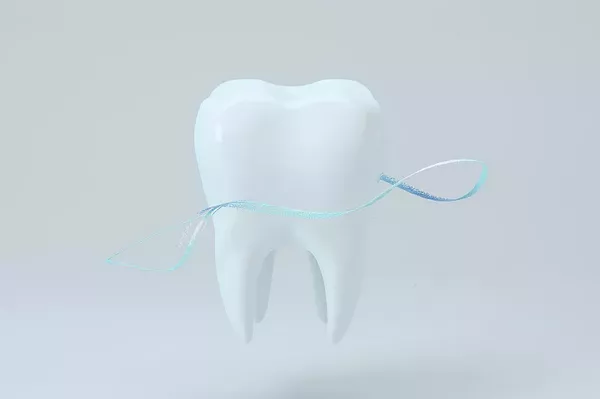Dental fillings have come a long way from the days of amalgam and metal-based materials. As technology advances, so does the field of dentistry, offering patients more aesthetically pleasing and functional options. One such advancement is the advent of white tooth fillings, also known as composite resin fillings. In this comprehensive article, we will delve into the composition of these modern dental restorations, exploring the materials that make them up and understanding the benefits they bring to oral health.
1. Introduction to White Tooth Fillings
White tooth fillings, or composite resin fillings, are a popular choice for dental restorations due to their natural appearance and versatility. These fillings are commonly used to treat cavities, repair chipped or broken teeth, and enhance the overall aesthetics of a patient’s smile.
2. Composition of White Tooth Fillings
Resin Matrix
At the core of white tooth fillings is a resin matrix, a blend of organic compounds that provides the filling with its flexibility and durability. The most commonly used resin in dental composites is bisphenol-A-glycidyl-methacrylate (Bis-GMA), renowned for its stability and compatibility with oral tissues.
Inorganic Fillers
To reinforce the resin matrix, inorganic fillers are added to the composite material. These fillers, typically made of glass or quartz particles, enhance the strength and wear resistance of the filling. The size and type of filler particles play a crucial role in determining the properties of the composite.
Pigments and Tinting Agents
To achieve a color that closely matches the natural shade of the patient’s teeth, pigments and tinting agents are incorporated into the composite resin. This customization ensures that the filling seamlessly blends with the surrounding dentition, making it virtually indistinguishable.
Initiators and Accelerators
The polymerization process, which transforms the liquid resin into a solid filling, is initiated and accelerated by specific chemicals. Camphorquinone is a common initiator, activated by light in the blue spectrum. Meanwhile, accelerators such as amines work in tandem to expedite the hardening process.
3. Advantages of White Tooth Fillings
Aesthetic Appeal
One of the primary reasons patients opt for white tooth fillings is their natural appearance. Unlike traditional amalgam fillings, which are silver in color and stand out against the teeth, composite resin fillings can be customized to match the exact shade of the patient’s natural teeth.
Versatility in Application
White tooth fillings are versatile and can be used for various dental restorations. They are suitable for filling cavities, repairing chips or cracks, reshaping teeth, and even closing small gaps between teeth. The ability to address different dental issues makes them a preferred choice for many patients.
Conservative Tooth Preparation
Unlike amalgam fillings that require more extensive tooth preparation, white tooth fillings allow for a more conservative approach. Dentists can preserve more of the natural tooth structure when placing composite resin fillings, contributing to the overall health and longevity of the tooth.
Reduced Sensitivity to Temperature Changes
Amalgam fillings have been known to expand and contract with temperature changes, potentially causing discomfort or damage to the tooth over time. White tooth fillings, on the other hand, exhibit minimal sensitivity to temperature variations, offering patients a more comfortable experience.
4. Application Process of White Tooth Fillings
Diagnosis and Treatment Planning
The process begins with a thorough examination and diagnosis by the dentist. X-rays may be taken to assess the extent of the dental issue and determine the suitability of white tooth fillings for the patient.
Tooth Preparation
Once the decision is made to use white tooth fillings, the dentist prepares the affected tooth by removing the decayed or damaged portion. The tooth is then cleaned and primed to enhance the bonding of the filling material.
Layered Application of Composite Resin
The composite resin is applied in layers, with each layer being cured using a special light. This curing process ensures that the filling hardens and adheres securely to the tooth. The dentist carefully sculpts and shapes the composite resin to achieve the desired form and function.
Final Polishing
After the composite resin has been applied and shaped, the dentist performs a final polishing to ensure a smooth and natural-looking surface. This step is crucial for enhancing the aesthetics of the filling and minimizing the risk of staining over time.
5. Care and Maintenance of White Tooth Fillings
Regular Oral Hygiene Practices
Maintaining good oral hygiene is essential for the longevity of white tooth fillings. Patients should brush their teeth twice a day, floss regularly, and use an antiseptic mouthwash to prevent the accumulation of plaque and bacteria around the filling.
Avoiding Staining Substances
While composite resin is resistant to staining, it is advisable for patients to avoid excessive consumption of staining substances such as coffee, tea, and tobacco. Additionally, regular dental check-ups will allow the dentist to monitor the condition of the filling and address any issues promptly.
6. Potential Drawbacks and Considerations
Cost Considerations
White tooth fillings tend to be more expensive than traditional amalgam fillings. Patients should weigh the aesthetic benefits and conservative tooth preparation against the cost when making a decision.
Durability in High-Stress Areas
In areas of the mouth that experience high levels of stress during chewing, such as molars, white tooth fillings may not be as durable as amalgam. In such cases, alternative materials or restorative options may be considered.
Conclusion
In conclusion, white tooth fillings, composed of a resin matrix, inorganic fillers, pigments, initiators, and accelerators, represent a significant advancement in dental restorations. Their aesthetic appeal, versatility, and conservative tooth preparation make them a popular choice among patients seeking both functional and visually pleasing solutions to dental issues. While there are considerations such as cost and durability, the benefits of white tooth fillings contribute to their widespread acceptance in modern dentistry. As technology continues to evolve, it is likely that dental materials will further improve, offering even more options for patients looking to maintain optimal oral health and a beautiful smile.
Tooth Filling Fell Out What To Do
How do you know if a tooth filling fell out?
What Does Filling Do To Your Teeth



























